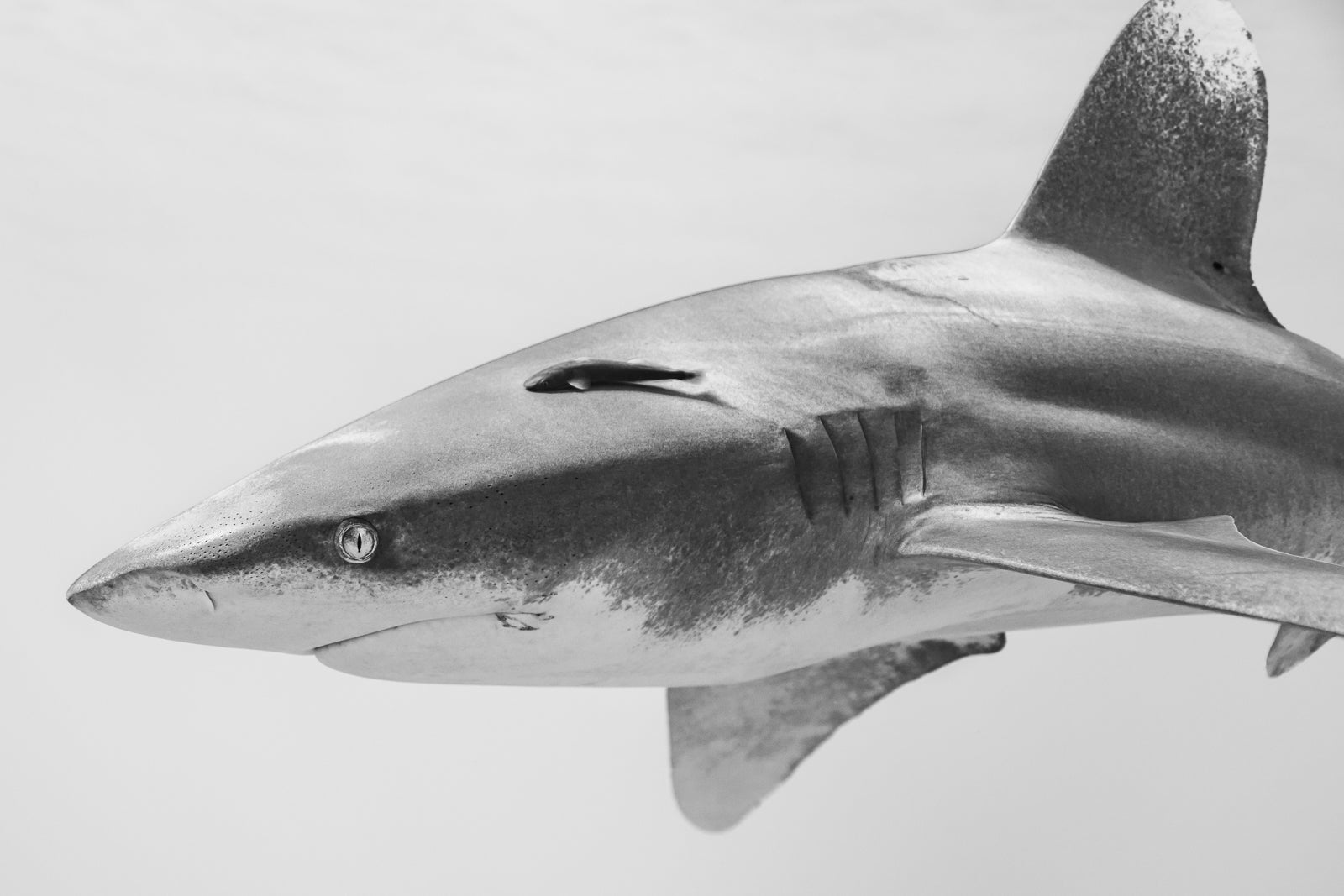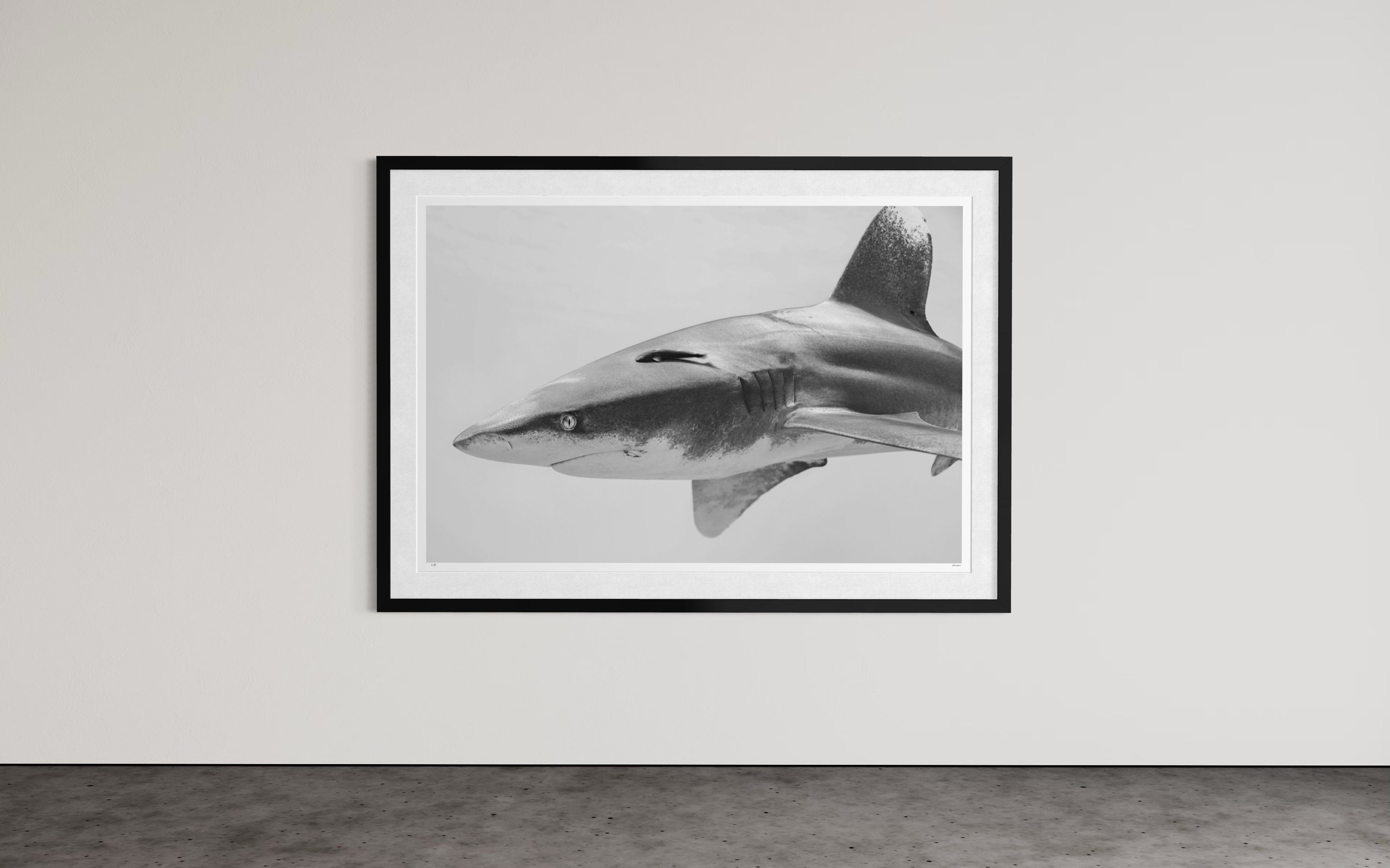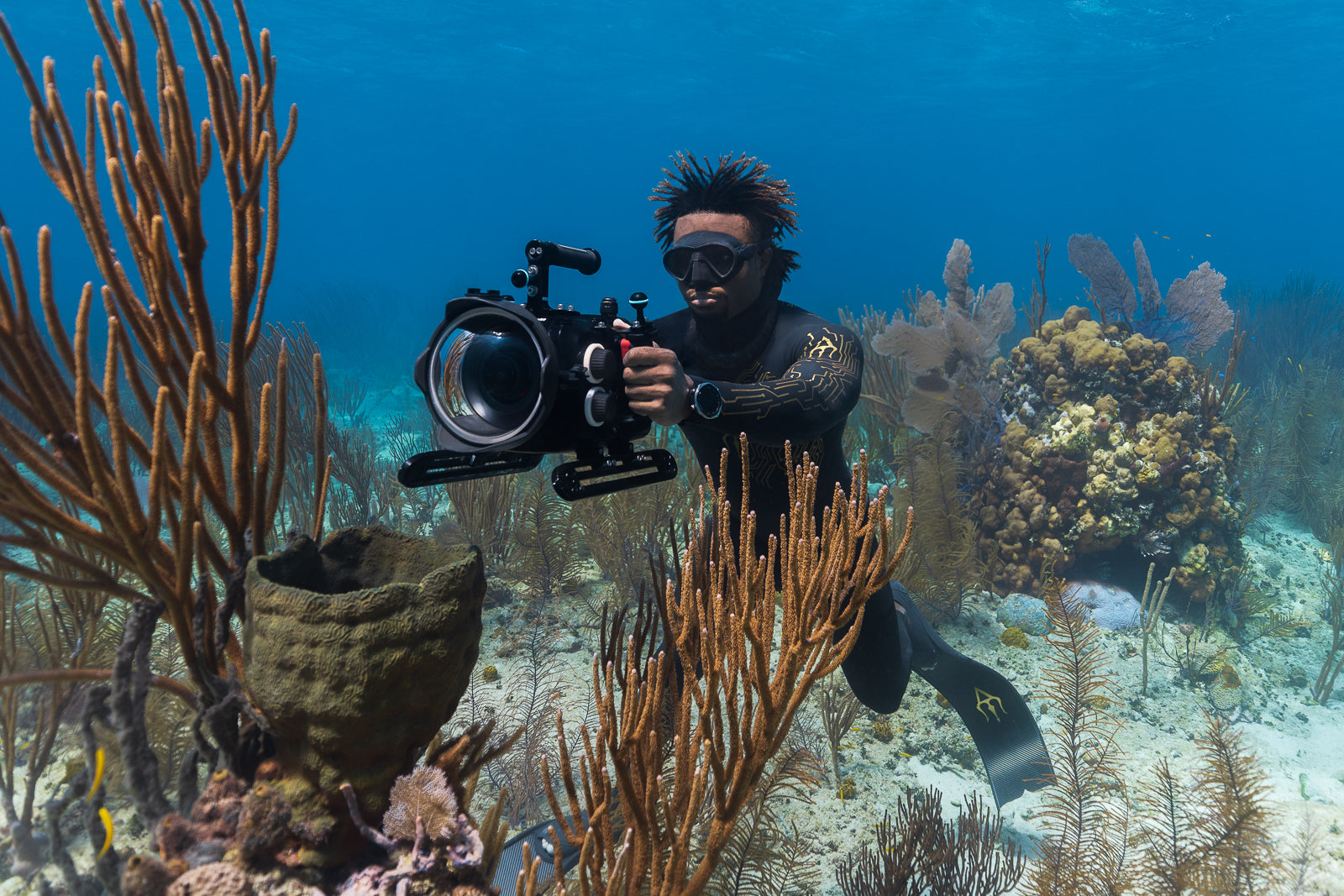





About The Shot
Moorea, French Polynesia/ 2024
In the vast, open ocean, Oceanic Whitetip Sharks are never truly alone. These patient predators often shadow pods of migrating sperm whales, waiting for an opportunity to scavenge leftovers from a deep dive hunt. Just as they follow the giants of the sea, they too are trailed by smaller companions—remoras and pilot fish that cling to their bodies or swim in their wake. The remoras use the shark as a free ride, feeding on scraps and parasites, while the pilot fish gain protection from potential threats. It is a silent dance of survival, where nothing goes to waste, and patience is rewarded. I shot this photo during a trip to French Polynesia with a few friends—some of them shark divers and some scientists. We only had a three-hour window on the water before catching our boat back to Tahiti from Moorea, so we went straight out to a FAD (Fish Aggregation Device), which fishermen use offshore to attract pelagic species. These floating structures become a hub of life in the open blue, drawing in fish and, sometimes, sharks. We were over thousands of feet of deep water and had no idea if we'd even see a single shark. But within five minutes of arriving, we spotted our first Oceanic Whitetip. Then another… and eventually five of them. No bait, no chum—just us quietly floating, engines off, and these curious sharks circling us for over an hour. Oceanic Whitetips are opportunistic hunters, always investigating anything unfamiliar in their environment. In the vast blue desert of the open ocean, every encounter could mean survival—so they check everything out. Luckily for us, that curiosity didn’t turn into lunch. It was one of the most unforgettable and humbling encounters I’ve had out in the open sea. In this endless blue desert, the Oceanic Whitetip is both hunter and wanderer, ever watchful for its next chance.

